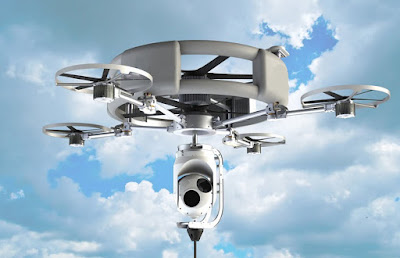Tips for Cleaning and Maintaining Your Drone and Its Propellers
For the most part, the maintenance of a drone is pretty basic. They should be given a pre-flight check before use and a post-flight cleaning and examination. Doing so generally doesn’t take all that much time but proves to be an excellent investment of time. The following is an overview of basic drone cleaning and maintenance tips that don’t require any specialized technical knowledge of the drone motor or its function, but will keep your drone in the air longer and performing better when it’s up there. It will also almost certainly save you a good bit of money in the long run.
Pre-Flight Checklist
Begin by checking the
drone itself. Ensure that you have all of the necessary equipment and
that the home point is set. If you’ve got a camera on your UAV, be sure
the lens cap is removed and that the SD card is present. Make sure the
on board compass is calibrated and that the appropriate flight mode is
selected; check signal and satellite strength, if applicable. Then check
the drone propellers. Be
sure that they spin freely but are appropriately tightened. Check that
the batteries are properly fitted and that they are an appropriate
temperature.
Do environmental checks too. Let
anyone near you know that you’re going to be flying a drone, and be
aware of all possible obstacles, including trees and power lines, etc.
Definitely be sure that you are in a safe, legal flight zone. If you’re
flying your drone in an area shared by commercial, private, or passenger
aircraft, you’re not only risking considerable legal jeopardy, but more
importantly, risking the lives of those in the aircraft. Fly your drone
only where it’s appropriate and always exercise reasonable caution.
Post-Flight Maintenance
Perhaps the most important feature of post-flight drone maintenance is propeller care. Propellers should be cleaned after every flight. A good toothbrush or comparable small cleaning brush is great for propellers. As accompaniment to the toothbrush, some drone pilots swear by toothpaste as a cleaning medium. They brush the propellers free of any dirt or grime with the toothpaste and wipe it off with a lightly-moistened microfiber cloth, ensuring that the propellers are totally dry afterward. Others prefer isopropyl alcohol.
After
the props are removed, clean the gears as well. Obviously you don’t
want to get any toothpaste on any gears or any moving parts. Those can
be cleaned with another (toothpaste-free) toothbrush or other small
brush. Cans of compressed air can be helpful as well. Although be
careful not to spray those too close to or too long at the gears. They
can damage delicate mechanisms by freezing them.
Before
returning the propellers to their housing, check them for any warping
or hairline cracks, particularly near the hub. The easiest way to do
this is to lightly bend them. If you note any cracks, warping or any
other issues, throw the propellers away and get new ones. Investing in
some new propellers, even the most expensive ones, is literally a very
small price to pay when compared to a crashed drone that was worth many
hundreds of dollars.
About XOAR
For over 40 years, XOAR has been recognized as an industry leader for their innovation and the fantastic quality, efficiency, and precision of their RC propellers and the rest of their UAV accessories. Their use of leading-edge technology and the best material, engineering, and manufacturing has further established that reputation. Their specialization includes propellers for LSA, ultralight aircraft, industrial UAVs, Civilian Aviation, commercial applications, mid-to-large size UAVs, RC Airplanes, and more. XOAR’s propellers are noted for their quietness in flight, superior agility, low air friction, and excellent performance overall in flight.
Soar to greater heights with your drone hobby or business, at Xoarintl.com




Comments
Post a Comment